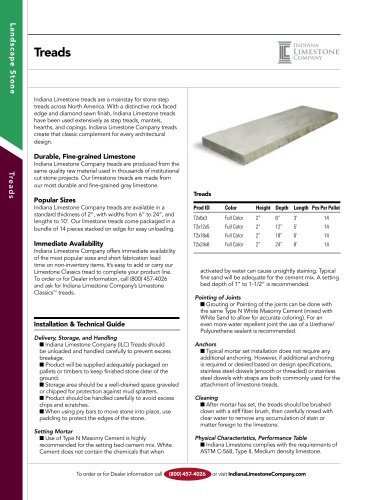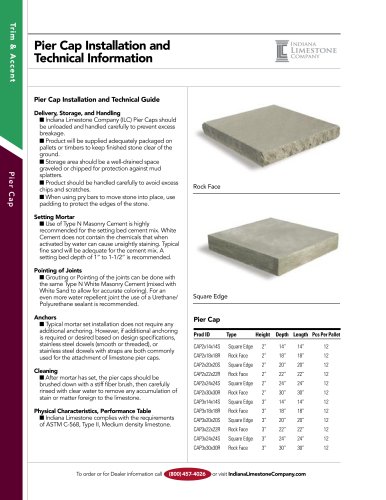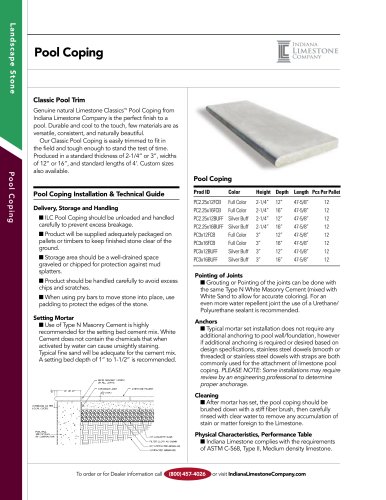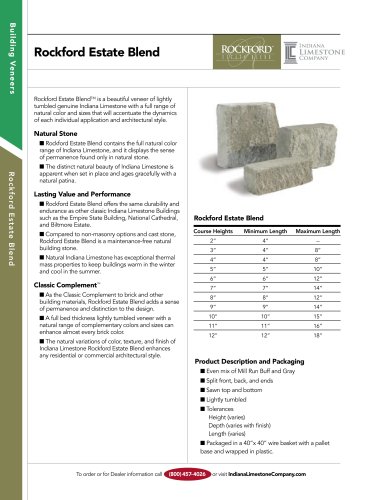
Catalog excerpts
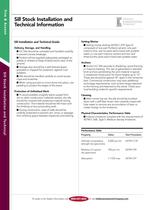
Sill Stock Installation and Technical Information Sill Installation and Technical Guide S ill Stock Installation and Technical Delivery, Storage, and Handling ILC Sills should be unloaded and handled carefully to prevent excess breakage. Product will be supplied adequately packaged on pallets or timbers to keep finished stone clear of the ground. Storage area should be a well-drained space graveled or chipped for protection against mud splatters. Sills should be handled carefully to avoid excess chips and scratches. When using pry bars to move stone into place, use padding to protect the edges of the stone. Protection of Unfinished Work To avoid possible unsightly stains caused from dirt or other construction materials residue, the sills should be covered with protective material during construction. This material should be left intact until the finishing of any surrounding work. During construction, tops of walls should be carefully protected to prevent rain, snow, or seepage from entering space between keystones and backing. Setting Mortar Setting mortar shall be ASTM C-270 Type N composed of one part Portland cement, one part mason’s lime, and six parts sand mixed with potable water, or one part masonry cement and two and three-fourths parts sand mixed with potable water. Anchors Anchor ILC Sills securely to sheathing, wood framing, or masonry backing. The use of galvanized or stainless brick anchors penetrating the joint material is typical in residential construction for stone heights up to 12”. These ties should be spaced 18” apart in the horizontal bed. Commercial construction may have additional anchorage requirements, such as bent straps attached to the framing and fastened to the stone. Check your local building codes for specific requirements. Cleaning After mortar has set, the sills should be brushed down with a stiff fiber brush, then carefully rinsed with clear water to remove any accumulation of stain or matter foreign to the limestone. Physical Characteristics, Performance Table Indiana Limestone complies with the requirements of ASTM C-568, Type II, Medium density limestone. Performance Table Property Test Procedure Ultimate compressive strength dry specimens Modulus of rupture dry specimens To order or for Dealer information call
Open the catalog to page 1All Indiana Limestone Company catalogs and technical brochures
-
ILI HANDBOOK
157 Pages




